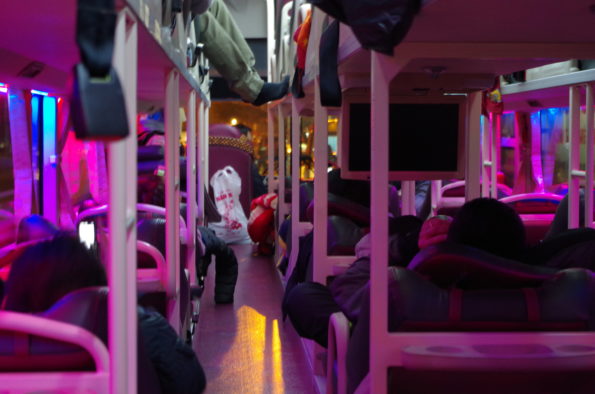Vietnam Travel Basics
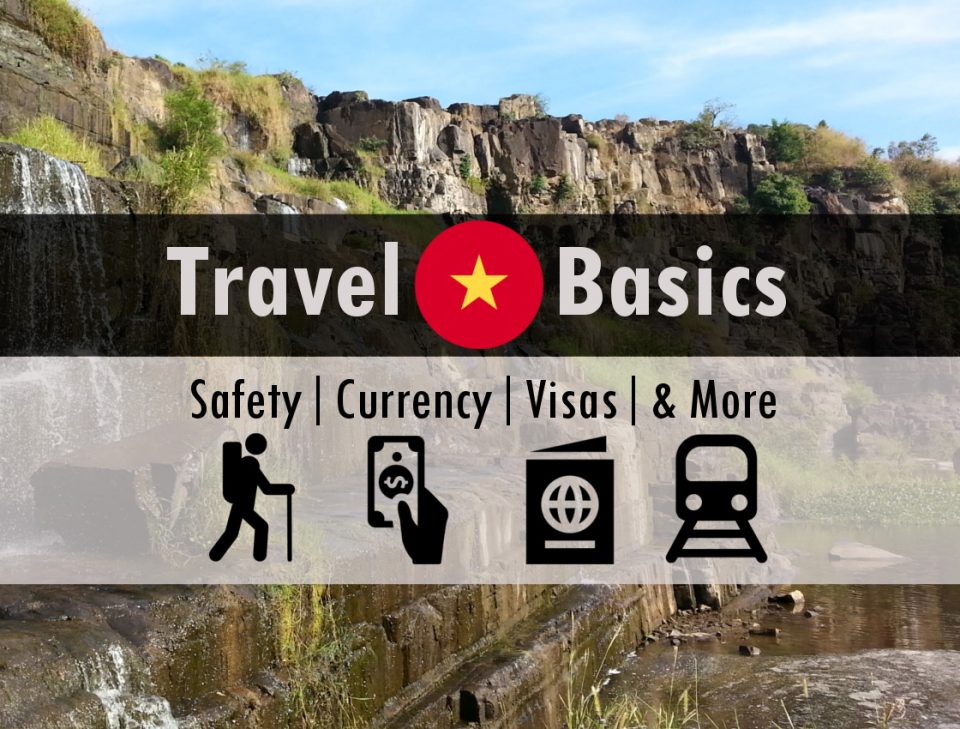
So you’re thinking of backpacking Vietnam? Wondering how much it’ll cost you? Is it safe to travel alone? Where should you go? And how to get around? I spent 27 days in Vietnam, it was one of the best experiences of my life! Maybe… I’m a little biased as it was the very first country I backpacked, my special first, but I’m glad to say its a great place to learn the basics of becoming a savvy world traveler!
Vietnam is still an underrated travel destination, but well established for backpackers. There is so much to learn and enjoy from the food & culture, to the rugged untamed nature and incredibly rich history. To make things easier for you, here are the basics you should know for traveling Vietnam.
Vietnam Info Check List
The Cost to Travel Vietnam
In 27 days, I spent 12 million Dong which is approximately $540 USD. Unluckily for me this was during the oil recession, so as a Canadian it cost a little more than $800 CDN for the month. This was money I withdrew in Cash at ATMs. Add another $60 USD for my Visa and we can round off for an even total of $600 USD. Not bad eh!
$600 USD was for all my accommodations, buses, food, excursions, motorbike rentals and gifts. You can expect to tack on another $200 USD if you plan on drinking regularly at night clubs or a lot of higher end excursion services.
- Hostels & Guesthouses range from $5 -10 USD/night (100,000 to 200,000 VND). Most include breakfast and maybe even supper if you’re lucky!
- Street food should never cost more than 40,000 VND, or $2 USD. While a dine-in restaurant can range upwards of 200,000 VND (Hotpot), they usually range between 50,000 and 80,000 VND per meal item.
- Beer in Vietnam is amazing! There are many different brews! Some beers are location specific and range from 10,000 to 30,000 VND per bottle. Tasting all the different beers, including the questionable home brews in Ha Noi’s beer street corners was a lot of fun!
Test out the Market
TIP: Ask you hostel staff what is the going price of a fruit, choose a fruit, any fruit. I chose dragon-fruit because I really like it and its easy to spot from far away since its bright pink. When you enter a market and want to buy fruit for the day, you will have a reference point for the merchant’s quote.
Now you can assume the price of most goods are doubled or tripled for tourists. In Da Lat, the price for a dragon-fruit was roughly 7,000 VND, but I was quoted 20,000 by the merchant and negotiated it down to 10,000. Many tourists complain about feeling ripped off by the locals, well its your responsibility to find out how much things actually cost! Markets are based on the availability of information, so whether its Wall St. or the Ha Noi Night Market, these rules apply!
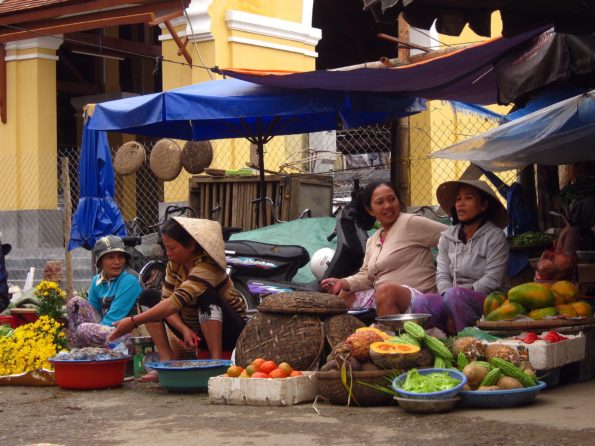
The Currency -Vietnamese Dong (VND)
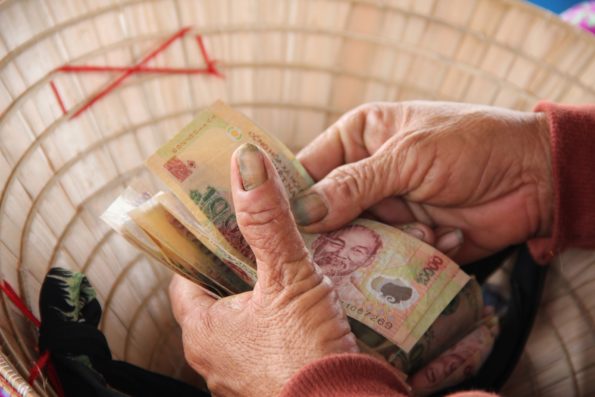
Tip: Keep track of expenses you covered for friends, and break the larger bills at large established restaurants or convenience stores. The best way to exchange cash in another currency for VND is through a commercial bank which are located in most big cities.
The Dong is a floating currency, which means the exchange rate can vary with the USD or other currencies depending on economic conditions. During my trip, the Dong was cheap for the US Dollar but expensive for the Canadian Dollar. The Dong usually trades at 20,000 Dong to $1 USD.
Vietnam is Safe to Travel
Safety should always be a point of concern for travelers when choosing the next vacation or backpacking destination. I recommend check out the International SOS Map Website for an overview of travel risk across countries. The map has different ratings for Medical Risk, Security Risk and Road Safety Risk.
The best resources for accessing the safety of a country are your country’s embassies! You should check out the physical location of your embassy in the country or if there isn’t one, another embassy that accepts you. For example, the US Embassy will likely help Canadian Citizens if there isn’t a Canadian Embassy available.
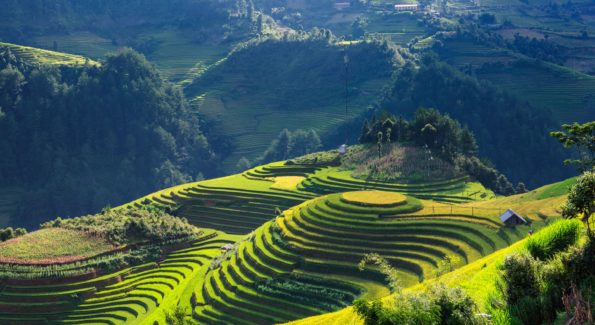
Embassy Websites
- The US Department of State – Bureau of Consular Affairs has Vietnam Ranked as “1 – Exercise Normal Precautions”. The safest rating.
- The Government of Canada – Public Health Agency has Vietnam Ranked as “Exercise a high degree of caution”. The second safest rating, due to some traces of the Zika Virus.
- France Diplomatie – Outlines some of the specific risks in Vietnam such as Halong Bay boat Accidents and Pirates.
- Australian Government – Department of Foreign Affairs and Trade has Vietnam ranked as “Exercise normal safety precautions”. The safest rating,
Vietnam Visa Application
Getting a Visa for Vietnam can be very confusing, so START WITH A TRUSTED SOURCE!
Go to your Government Website that you know is real and find the links to the Official Vietnam Government Pages. I used the US Department of State Website subsection “Entry, Exit and Visa Requirements”to find the Official Vietnam Websites.
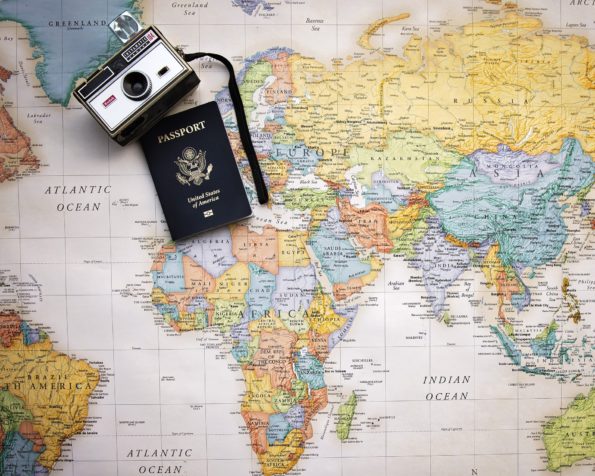
Visas for Vietnam
Sticker Visa: Single or Multiple Entry, Tourist, Business, Other. Apply in person or mailed directly to the Embassy in your country. Safest Choice. Prices Vary
Loose-leaf Visa: Single or Multiple Entry – Submitted online and receive a paper print out by Mail. Not Recommended because Immigration authorities might not give it back when you leave and you may need it to enter Laos. Prices Vary
Pre-approval for Visa on Arriva (VOA): Supposed to be for Emergency Situations only. For example: “Departing from a country where there is no competent Vietnamese visa-granting authority.” or “Traveling through many countries before entering Vietnam”. The Canadian Vietnam Embassy strictly warns “for emergency cases only” and the U.S. Department of State recommend “that travelers obtain a visa directly from an embassy or consulate of Vietnam prior to arrival.”
Warning: A lot of the fake Visa websites sell these “Visa On Arrivals” because they are essentially just a piece of paper with a stamp and signature. I know this because it’s what I received; a letter emailed to me with four other peoples private information also listed and a stamp + signature. Looking back I am fortunate that I didn’t have any issues and that the piece of paper was the real deal. For a service that is supposed to be for emergencies, I think it’s very popular as half the tourists on my flight to Hanoi had to wait for their official visas to be issued. I paid $40 USD for the pre-approval letter and another $25 USD on arrival for the issued Visa. Not recommended.
E-Visa: Single Entry 30 days only. Very similar to the Visa on Arrival, except it’s done only through the Vietnam Immigration Department. After a 3 day wait, you are approved and a digital copy of your visa is sent to your email which you have to print off yourself. $25 USD paid electronically. E-Visa is only available for 46 countries in this list.
Visa Requirements
- Passport or Passport Scan with 6 Months Remaining on your passport.
- Application Form
- Standard issue Color Photograph taken in the last 12 months (Attach to email or print)
- Credit Card Form or Cheque in USD
- Prepaid Envelope with your Mailing address (For Mail Option)
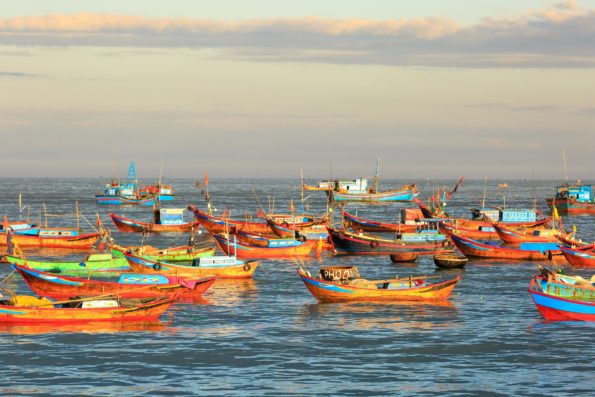
Using a Visa Service
Getting a Visa in Vietnam can be super easy or a huge hassle depending on how much time you have left before your departure and if you are looking for the lowest price. The alternative is simply to use VisaHQ Services.
It just makes things a lot easier and guaranteed. The benefit of using a Visa service is being able to have all your different Visas for multiple countries organized in one place and have professional advice should you need specialized service for non-tourist visas
Note: VisaHQ is an Affiliated Partner of Tallypack Travel, a commission from your order will go to support the blog!
VisaHQ is available for a lot of countries, check out our VisaHQ widget in the sidebar to check if you need a Visa for Vietnam (Down Below on Mobile)
The Geography – North & South
Vietnam is located in South East Asia along the South China Sea. It is a long and narrow country, so most travelers start via the North in the city of Hanoi, or South in the city of Ho Chi Minh. The South is full of beautiful beaches and islands while the North has spectacular mountains, the famous Halong Bay and a lot more isolated villages. Most cities can be categorized as mountainous, coastal or river-lands.
Weather in Vietnam
Vietnam has three different regions that experience weather in extremely different ways. You have the Northern Mountains and Coast, the Central Coast and the Southern Coast.
The North has four different seasons and can reach low temperatures in the Winter. You can even see snow if you are lucky in the mountains of Sa Pa in January, bring a Jacket! While I was in Vietnam, even Hanoi had snow for the first time in 52 years while it was 30 degrees in Ho CHi Minh City in the South.
The Central and South regions vary between 20 and 30 degrees on average throughout the whole year, so you’ll want to plan your trip around the weather in the Northern regions. Halong Bay is a lot more enjoyable in 25+ degree weather than 15 degree weather and the mountain villages do not have heating as we found out in January. Our host had to burn coal in a small hearth to keep warm in Ta Phin Village.
Here is another guide with a temperature chart by month. Having to deal with temperatures under 20 degrees and even close to 0 means carrying more clothes and equipment.
Warning: Vietnam experience rain all year, either hot summer rain or winter rain, it doesn’t matter! Bring a rain jacket!

Transportation
The best way to get around in Vietnam is by motorbike, however international licenses can be a little tricky in terms of legality for tourists. Many tourists will buy a bike for $175-$250 USD in Hanoi or Ho Chi Minh City and simply bribe the local police if necessary. It is said to be the best way to travel Vietnam as a backpacker! You can go at your own pace, see small towns and experience the true local Vietnamese culture.
Check out WanderLove and Travelfish for guides on how to prepare yourself and what to expect for a cross-country motorbike experience! If you are looking to purchase a motorbike please check out TravelSwap or Craigslist for listings.
Cheapest: Night Sleeper Buses
For cheap transportation you’ll have to settle for night buses. The new sleepers have individual bunks that are reasonably comfy (over 6’2/188 cm beware) and cheap! Fair warning, the night buses are a rough way to travel, I recommend buying an individual ticket first before committing to the entire open ticket booklet.
Expect long waits for departure, unfriendly staff that yell a lot, random stops on the side of the road to pee, getting kicked off at 4 am, and possibly loud 90s techno music. The local shops that sell the tickets have no control over the main bus company, so if something goes wrong, which is likely, call the main office.
Overall, my experience wasn’t too bad. I used Queen Cafe VIP which is apparently one of the worst companies. However, the buses had WiFi that worked about half the time, blankets and I got to meet lots of other backpackers heading to the same destinations! From Hanoi- Phong Nha- Hue- Hoi An-Nha Trang – Dalat City – Ho Chi Minh City cost me just over 36$ USD. $6 per bus on average. Just remember to call ahead the day before!
An open bus ticket is a booklet of tickets valid for 30 days. Each ticket is for a pre-selected leg of travel, usually from Hanoi to HCMC. You simply call the day before you want to take the bus from each destination. The buses have select times, which can be from vary widely from departures at 10 pm at night to 5 am. Here are a few open bus ticket companies are as follows:
- Sinh Tourist – formerly ‘The Sinh Cafe’, a reputable company
- Hoang Long Bus – Offer ‘luxury’ buses
- Queen Cafe VIP – super cheap! Ask for Kang at Tasty Restaurant, she sells open bus tickets at half the price of the hostels.
Comfort: Train
The last option is to travel by train. It is the most comfortable mode of transportation and by far the most reliable. But honestly, if you are truly backpacking Vietnam comfort and reliability just don’t make for good stories. No break downs, crazy drivers or locals sleeping on the aisle floor isn’t a memorable experience. But, I get the appeal for mature travelers who don’t mind spending a little extra for a good night sleep.
There are local trains to most small towns in Vietnam, and tourist trains that frequent the most popular cities. The tourist trains also offer a little more luxury options including VIP Berths for up $290 USD, however basic seats can be purchased from $12 to $64 depending on your intended destination. This is a funny little website by a guy who really loves trains! He can be your go to for travelling by train in South East Asia, enjoy your padded cushions and washrooms!
Basic Vietnamese Phrases
- Hello = Xin Chao (Sin Chao)
- Thank you = Cam on (kahm uhn)
- Sorry = Xin Loi (Sin Loi)
- Goodbye = Tam Biet (Tarm Byeet)
- No = Khong (khom)
- My Name is ___ = Ten toi la ____ (Ten toy la__)
For a more complete list, we references Local Insider Article!
The History and Culture
Unless you haven’t heard, Vietnam has had a long history of War dating back thousands of years. From Champa Kingdoms in Cambodia, to Chinese Dynasties, French Colonials and most recently the American War, the Viet people have been through A LOT! Since the Vietnamese intervened in Cambodia to stop the Khmer Rouge in the late 70s, the country has finally emerged into a period of peace.
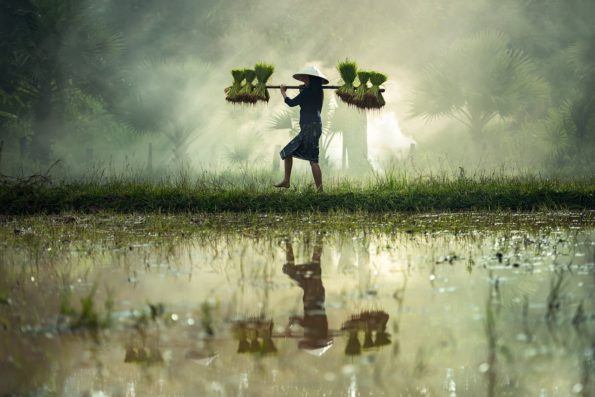
It goes without saying to be respectful of their culture and political philosophy as a democratic communist nation. If you are French or American, you may get a little bit of a cold shoulder in the North near Loas, but you’ll also be really appreciated in the South! There is especially a lot of love for Californians, I don’t know why…
The young Vietnamese I met were very impressive! Be open to stopping for a short conversation as the students often like to practice their English with tourists. Among those I met, some spoke fluent French, some English, currently go to technical universities or frequent night schools for learning English.
Economic Data on Vietnam
I love economic data and the little insights you can gain from a few numbers. Vietnam’s economy is growing but not as fast as other South East Asian countries like Malaysia, Thailand or even China.
Vietnam remains one of the poorest countries in South East Asia. The economy is easily 10 years behind countries like Thailand and Malaysia.
But Vietnam is a socialist country, so you can expect economic development to be a little slower. For example foreign investment might be more strictly regulated than under a free-market system.
Vietnam has a very large population at roughly 93 million inhabitants. Incredibly, the population growth doesn’t seem to be slowing down.
Interestingly, Vietnam surpassed both Malaysia and Thailand recently in terms of children completing their schooling! You can see this when you visit, with even the most remote countryside villages have schools. They even offer some English classes for all ages in the evening at the local Junior High schools.
The life expectancy for Vietnamese is on par with that of it’s neighboring countries: Malaysia and Thailand. If you look at the 1970s, the life expectancy went down significantly for several years during the American War. Neither Thailand or Malaysia saw any such decreases at that time.
With education levels on the rise and a government now slowly opening up to more foreign investment, it’ll be interesting to see what the future has in store for Vietnam.
